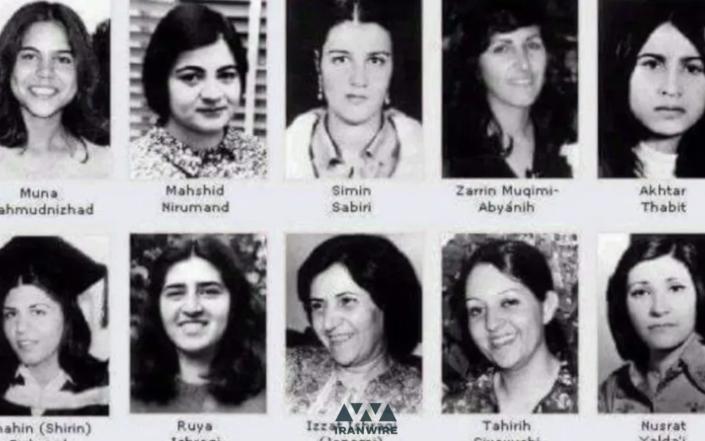
In the 44-year history of the “Islamic” Republic of Iran, one of the most heinous acts it has ever committed – out of a ridiculously large number to choose from – occurred in the last hours of June 18, 1983, when 10 Baha’i women in Shiraz were hanged for refusing to renounce their religious beliefs.
One after another, the women were forced to watch each other hang, supposedly to give one last chance to renounce their faith and save their own lives. Each of them refused. The oldest was Ezzat, 57, who was hanged along with her 23-year-old daughter. Ezzat’s husband had been executed two days earlier.
Nosrat was 46 years old, his son had been executed two days earlier. Most of the others were in their twenties.
The youngest, Mona, whose father had been executed three months earlier, was 17. She asked to pass the last one so the others wouldn’t see her hanging. When I first heard the news, living my normal London life in leafy Kensington, the impact was oddly minimal.
I was also 17, born 20 days after Mona, but that was part of a stream of stories coming out of Iran of massacres and executions. I was in a constant state of anxiety because many of those killed were friends and acquaintances of my parents.
Notable among these are the assassinations of the Baha’i administrative body of members of the National Assembly in 1980 and of the Tehran Assembly, brutally slaughtered in 1981, all known to us.
In June 1983, without the internet existing to give us the slightest detail to bring the story a little closer, the hanging of the 10 women of Shiraz seemed to get lost in the maelstrom. Iran was constantly on the news and my main concern was the social impact it had on me.
My school friends knew about it but didn’t quite understand what I was going through due to my lack of confidence to be able to explain an important nuance to them: that I was part of a persecuted minority; that I was going through the double pain of association with a country full of violent fundamentalists who brought me deep social shame, but who also murdered members of my own community.
It was two years later when Mona’s story was captured in pop song Mona with the kids, which I started connecting. I attended a rally at the Baha’i Center in London with Jack Lenz and Doug Cameron, the songwriter, producer and singer. We knew Mona as an exceptional young girl, certainly not a religious fanatic. She was just a young girl trying to empower children. His personality caught up with me.
We watched the video. The impact of the music on the images was overwhelming. And it was impressive to see American actor Alex Rocco play a mullah – a far cry from his role as casino owner Moe Greene in The Godfather, who was shot in the eye while on a massage table. What was important was that they had created art to keep the memory of women alive. Even more now.
Iranian women’s struggle for equality is older than many Westerners think. The 19th century poet and scholar Táhirih exemplified the power of women to transform society. She was an early adherent of the Bábí movement, a forerunner of the Bahá’í Faith, and strengthened by the teachings of her newly discovered faith, she rose up to herald a break with the past.
In particular, she caused a profound shock when she publicly removed her veil during a conference attended only by men in 1848. In 1852, she was put to death by the Iranian authorities.
These words were attributed to her just before her execution: “You can kill me anytime you want, but you can’t prevent the emancipation of women.
Today, in the blood, tears and wounds of thousands of young women in Iran seeking equality, we can see echoes of the injustice suffered by the 10 women of Shiraz 40 years ago. The same forces are still at work today, deploying torture, mutilation and murder to deprive Iranian women of their basic rights.
Many died days after the best-known victim of the femicide wave, Mahsa Amini, who was beaten by vice police for not wearing her hijab properly and died in hospital on September 16 of the last year. Then Nika Shahkarami and Sarina Esmailizadeh, both 16, were killed during protests. Many of the dead are young girls: Hadis Najafi, 22, Mahsa Mogoi, 18; the list continues.
The men of Iran also stand in solidarity with their mothers, sisters, wives and daughters and risk their lives. Many men have already been executed simply for protesting.
I am in awe of their courage. But we are all deeply connected. I am proud to be part of the #OurStoryIsOne project to keep the memory of the 10 women of Shiraz alive and inspire real change not only in Iran, but also for the whole world.
Omid Djalili is an actor, comedian and activist.
Broaden your horizons with award-winning British journalism. Try The Telegraph free for 1 month, then get a year for just $9 with our exclusive US offer.

